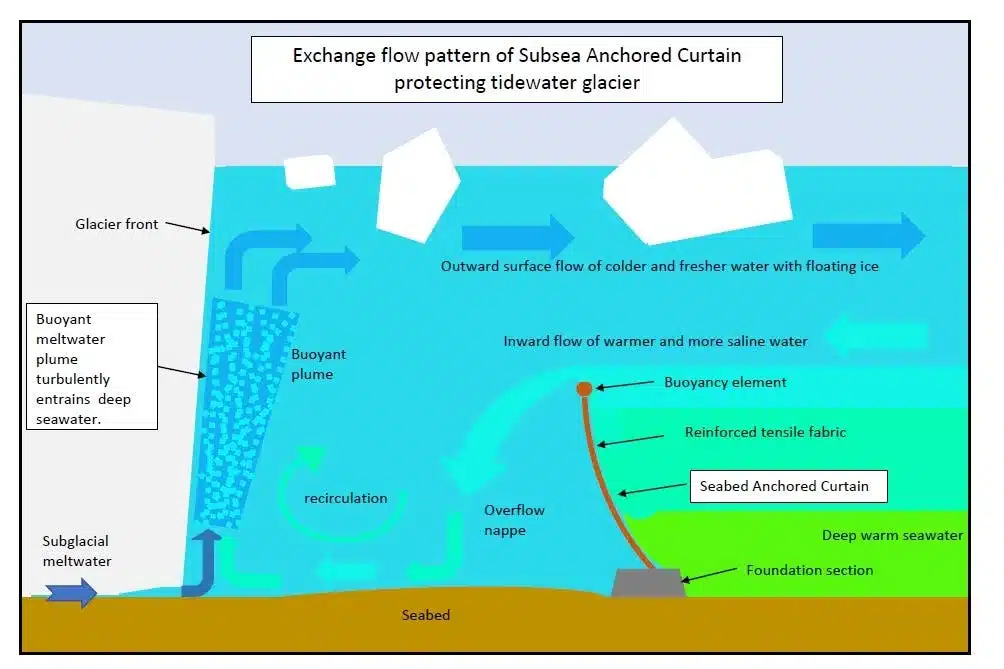Scientists propose artificially slowing down glacier melting
- July 12, 2024
- 0
Climate warming has very tangible consequences that threaten people’s well-being and lives. One of the most dangerous is the rise in the level of the World Ocean due
Climate warming has very tangible consequences that threaten people’s well-being and lives. One of the most dangerous is the rise in the level of the World Ocean due
Climate warming has very tangible consequences that threaten people’s well-being and lives. One of the most dangerous is the rise in the level of the World Ocean due to the melting of large glaciers. While the main way to combat it remains the optimization of industry and the transition to low-carbon technologies, scientists do not ignore geoengineering.
Radical ideas for combating glacier melting were discussed at recent conferences of the American Geophysical Union and the European Geosciences Union. Based on the results of these discussions, scientists from the University of Chicago, together with colleagues from Finland and Germany, published a “White Paper” on geoengineering.
In the published document, glaciologists for the first time publicly acknowledged the possibility of a technological approach to the problems caused by melting glaciers. No specific development, more a call for a “major initiative” for the future.
The two largest ice sheets, Antarctica and Greenland, are increasingly degrading under the influence of a warming climate. Their melting is inevitable under any scenario calculated by the end of the century. They are the main culprits in the rise in the level of the World Ocean, which has risen by almost 20 centimeters since the mid-19th century.
“We cannot stop sea level rise, but we can slow it down as humanity transitions to a low-carbon economy,” the authors of the White Paper wrote.
Scientists are looking at two types of intervention. The first involves installing “curtains” at the base of glaciers that would prevent warm ocean water from eroding them. Preliminary calculations suggest the protection is quite small. For the Thwaites Glacier in the Amundsen Sea in Antarctica, for example, even 80 kilometres of isolation from the seabed would improve the situation.

The second approach is to slow down the flow of meltwater from under the glacier to the sea. Scientists assume that if the meltwater is diverted, the glacier’s disappearance will slow down or even stop altogether. This can be done by drilling drainage wells in the glacier bed or by artificially freezing it.
What each of the approaches will lead to can only be guessed. It is possible that the bottom curtains will direct warm water to nearby ice shelves, and their installation will negatively affect the lives of local marine life and coastal human settlements. Drilling is less traumatic for the ecological situation, but will it be effective, and isn’t it cheaper to gradually adapt to a changing climate than to engage in “heavy engineering”?
The development of geoengineering approaches will require more than a dozen years, as well as extensive discussions with experts in various fields. Scientists believe that it is worth starting with the Arctic, which is more accessible and where work is cheaper than in Antarctica. However, it is necessary to take into account that the coasts of the Arctic Ocean are inhabited by indigenous peoples; work in the glacial zone may affect their lives.
In any case, all of this needs to be discussed, calculated, risk-weighted and agreed upon with all parties affected by such an intervention.
Source: Port Altele
As an experienced journalist and author, Mary has been reporting on the latest news and trends for over 5 years. With a passion for uncovering the stories behind the headlines, Mary has earned a reputation as a trusted voice in the world of journalism. Her writing style is insightful, engaging and thought-provoking, as she takes a deep dive into the most pressing issues of our time.